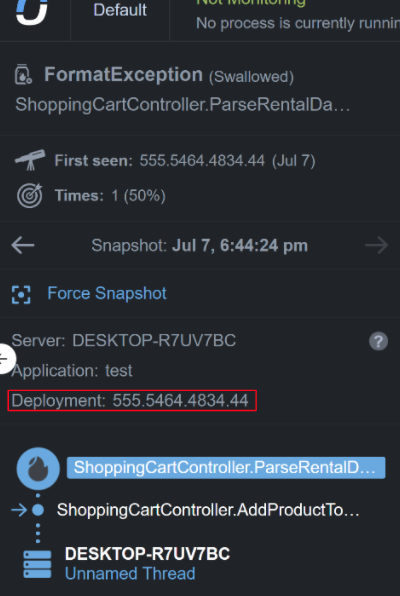Deployment Names in .NET
The Deployment name displayed on the ARC screen (and used on the Classic Event Dashboard's grid) for .NET events is automatically populated by OverOps to show the exact deployment version number based on the snapshot location.
Unless the Deployment name is specifically mentioned (by supplying a deployment name for the agent through the argument -Dtakipi.deployment.name or through the environment variable) - OverOps will automatically provide a more granular deployment name information.
This information, which is based on the hit location - is extracted from the version number on the hit location path and is best suited for scenarios where a single process can run more than a single active deployments components (such as an IIS web application).
This mechanism is enabled by default. To disable this feature use the following agent flag:
takipi.dn.extract.deployment.name=falseExample:
Consider a case where the application dll path is:
C:\inetpub\Appswwwroot\555.5464.4834.44\ShoppingCart.Controller.dll
And in this case, the IIS web server also holds additional deployments, all running within the same w3wp.exe process.
As this is a common use case, OverOps will extract the actual deployment from the numeric value within the dll path and this value will be used as the Deployment name in the ARC screen and on the dashboard.
The deployment version should be a combination of "." and [0-9]. Any other combination will be discarded.

Note that If the location won't have any numeric pattern (combination of [0-9] and "."), the version name won't be extracted.
As a best practice, in all other scenarios (when a monitored VM process is of a single deployment): Supplying a deployment name for the agent through the argument -Dtakipi.deployment.name, or through an environment variable, is advised. Setting the deployment name specifically will override this mechanism and there is no need to use the flag mentioned above to disable it specifically in those cases.
Updated 8 months ago
